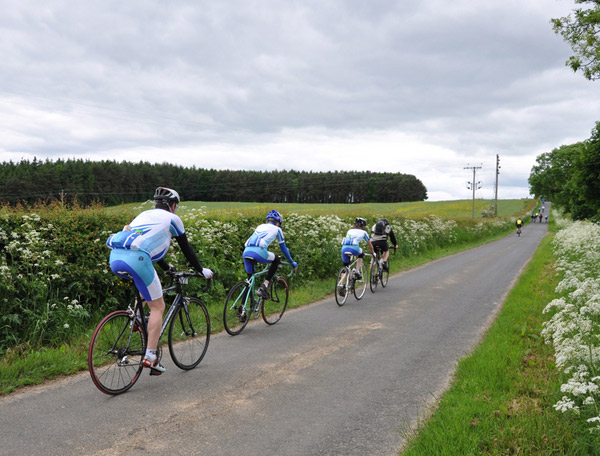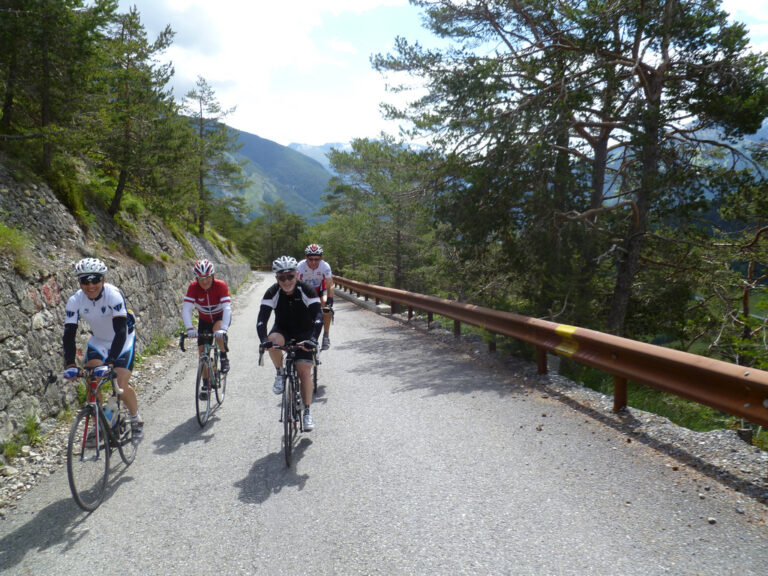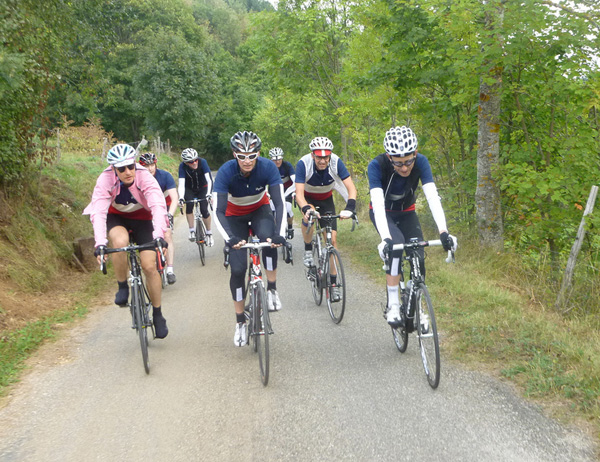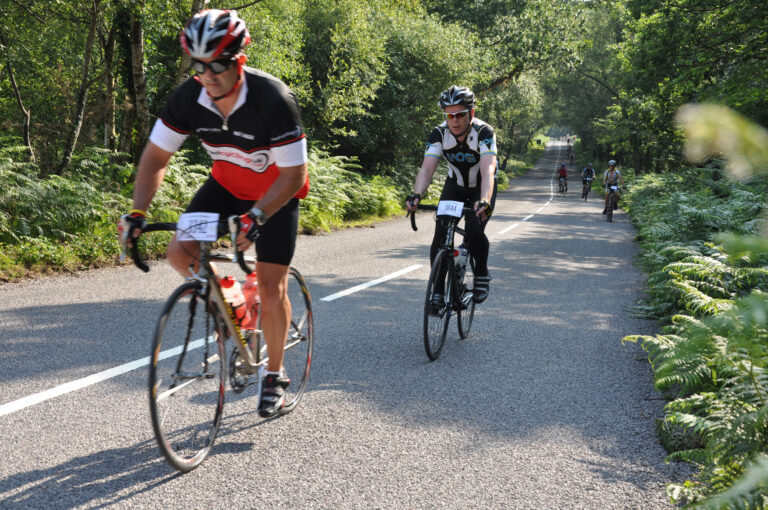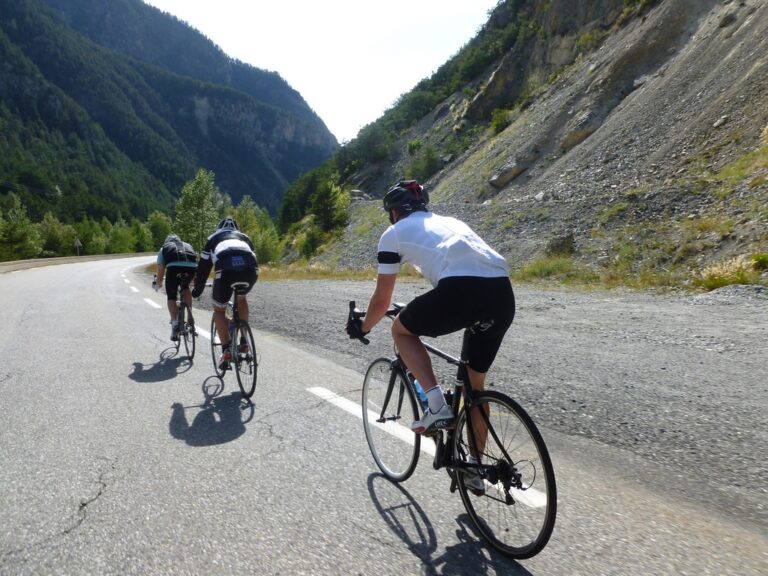
- Stay comfortable in the saddle for longer by adding some some flexibility training to your sportive programme. Pic: British Cycling
So far in this series we’ve looked at developing a progressive training programme based largely on riding technique and training intensity. In order to maximize your performance gains, it’s now time to look a little more closely at strength and flexibility routines. I’m often asked by riders from a variety of cycling disciplines about the benefits of supplementary strength and flexibility training and the answer is rarely black and white.
Strength and flexibility
While strength and flexibility are two of the components of the sort of fitness required in cycling, their importance varies greatly across the various disciplines of cycle sport. Clearly, track racing and off-road disciplines like BMX have different strength requirements to the road events, while TT specialists might require specific flexibility routines that allow them to maintain an aggressive aerodynamic ‘tuck’ position comfortably without compromising power output.
So where does that leave you, the sportive rider? As sportives involve spending very long periods of time in the saddle in both training and the events themselves, I always recommend a supplementary regime of strength and flexibility training, so let’s have a brief look at the benefits.
The stronger a muscle or group of muscles is, the longer it takes to fatigue and the less prone it is to overuse injuries. Its interesting to note that, when examining the debrief of riders who competed in the gruelling multi-day Ride Across America (RAM), almost all of those questioned about what they would do differently in their preparation for the event cited more strength and flexibility work in the gym and less time on the bike.
Residual injuries
Although this might seem a little strange given the nature of the event, residual injuries such as lower back, shoulder and neck issues were much more likely to be ‘show-stoppers’ than endurance fitness issues. In short, you can normally carry on by riding a little slower if you encounter fatigue, but acute pains in certain areas can be impossible to ride through.
Clearly, then, it’s beneficial to increase the strength of the muscles most specific to your cycling efforts and to increase the range of motion around the joints. At this point many riders turn off because they perceive ‘strength training’ as bodybuilding, which is something else entirely. While track sprinters and BMX riders would benefit from maximal strength gains in the gym, as a sportive rider you have little need to increase your top end sprint capabilities. The requirements are somewhat different, focusing more on developing the strength of the core muscles to support stability and flexibility of the hip flexors, glutes, quads and hamstrings, which are the primary movers in the pedalling action.
Flexibility has six clear areas of benefit in cycling terms, and specific to the sportive rider these are:
1) Comfort – a sustainable riding position that doesn’t compromise the pedaling action or aerodynamics. Correct bike fit is also a key here.
2) Safety – flexibility should allow quick changes in body position and cadence to meet the changing terrain or group riding dynamics. Riders also need a good range of vision and be able to turn the head and shoulders for a good all round view.
3) Aerodynamics – making the most of your riding position by reducing wind drag, especially on extended downhill sections
4) Efficiency – making the most use of the pedaling action. Lack of flexibility in any of the key muscle and tendon groups can compromise performance.
5) Injury prevention – a greater range of motion across the key muscle and tendon groups can reduce the instance of chronic injuries occurring as a result of the highly repetitive pedalling action
6) Control – shifts in body weight to counter and direct the position of the bike can be compromised without sufficient flexibility
So, based on the above, you can hope to see the benefits of even a rudimentary strength and flexibility programme. We’re not talking hours in the gym here, as clearly the majority of your time needs to be spent on the bike, but a good basic programme of just 20-30 minute,s twice per week, can make profound differences to your performance.
How do I do it?
This is very dependant on where you’re starting from. You might be lucky enough to have no pre-existing performance limiters to begin with, but the usual scenario for riders embarking on a training programme is that they perceive certain movement dysfunctions when riding for prolonged periods based on any number of different factors. Stiff joints or previous injuries are a common factor as are aging issues, but in all these scenarios the best way forward is to get yourself assessed by a professional. Don’t make the mistake of looking on-line for a generic, off-the-peg programme of exercises. Everyone is different and you need to address your specific demands. Most local gyms will have a strength and conditioning coach who can look at your case history in relation to your aims as a sportive rider and prescribe a very personalized set of exercises for you. These can usually be carried out at home with some very basic accessories like a Swiss ball. You’ll be using your body weight for most of the resistance and core exercises so there’s no need for complex gym equipment.
Finally, remember our principles of conditioning and add in the strength and flexibility routines gradually at first, building up progressively in line with the rest of your programme. Paradoxically, if all goes well you might not even notice the benefits, but providing you never have any structural issues that force you to retire from an event or miss training rides, you can be sure that it’s working well and doing its job.
Discuss this week’s training guide in this forum thread
Part 1: Going for Centuries
Part 2: Breaking down the barriers
Part 3: Goal setting
Part 4: Intensity
Part 5: Get in the Zone
Part 6: Performance Testing
Part 7: Creating a training plan
Part 8: Weekly training plans
Part 9: Be a better climber
Part 10: Improve your pedalling
Part 11: Become a better descender
Part 12: More descending skills
Part 13: Upping the pace
Part 14: Pacing and staying in a fast group
Part 15: Playing to your strengths
About the author:
Huw Williams is a British Cycling Level 3 road and time trial coach. He has raced on and off road all over the world and completed all the major European sportives. He has written training and fitness articles for a wide number of UK and international cycling publications and websites and as head of La Fuga Performance, coaches a number of riders from enthusiastic novices to national standard racers.
Contact: [email protected]

